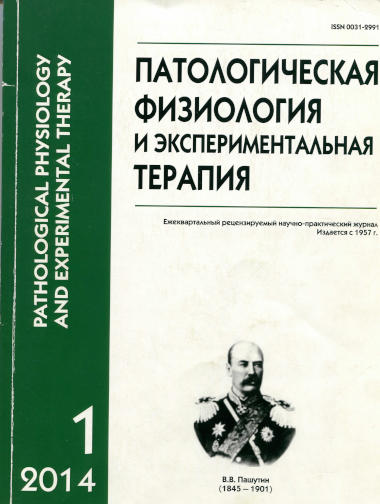Изменение соотношения уровней растворимых TNF-α и TNF-R1 в крови как одно из ключевых звеньев патогенеза, диагностический и прогностический показатель при ишемическом инсульте
Ключевые слова:
патогенез ишемического инсульта, прогностический маркер, sTNF-α, sTNF-R1Аннотация
Целью настоящего исследования было изучение динамики содержания sTNF-α, sTNF-R1 в крови пациентов, перенесших ИИ, корреляция их уровней с тяжестью неврологических проявлений. В исследовании приняли участие 60 пациентов, перенесших ИИ, 25 чел. составили группу контроля. Концентрацию sTNF-α, sTNF-R1 определяли иммуноферментным методом. Сделан вывод о том, что на 1 сутки развития ИИ взаимодействие sTNF-α и tmTNF-R1 потенцирует повреждение ткани головного мозга, запуская воспаление и апоптоз, на 7 и 21 сутки ИИ sTNF-α начинает оказывать нейропротекторный эффект. Взаимодействие sTNF-α с растворимой формой sTNF-R1 препятствует нарастанию повреждения. Сделан вывод о важном прогностическом значении динамики соотношения sTNF-α/sTNF-R1 при ИИ.Загрузки
Опубликован
2014-02-03
Выпуск
Раздел
Оригинальные исследования
Как цитировать
[1]
2014. Изменение соотношения уровней растворимых TNF-α и TNF-R1 в крови как одно из ключевых звеньев патогенеза, диагностический и прогностический показатель при ишемическом инсульте. Патологическая физиология и экспериментальная терапия. 58, 1 (Feb. 2014), 13–17.













